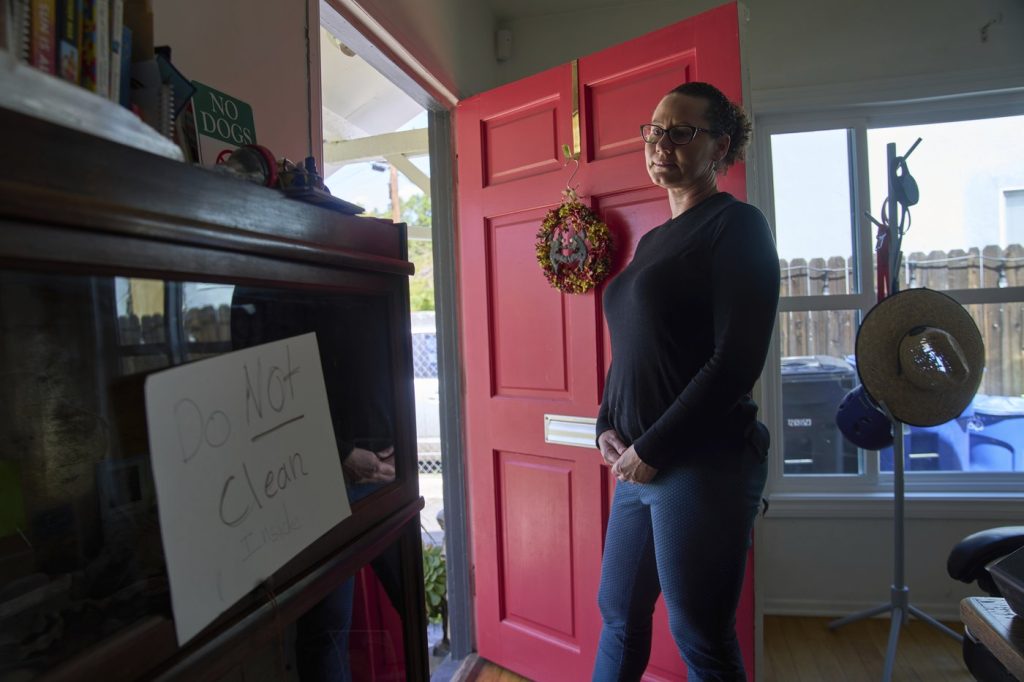Residents in the Los Angeles area impacted by the Eaton wildfire, which occurred three months ago and resulted in the destruction of over 9,000 structures and claimed 18 lives, are grappling with the aftermath and the potential health risks posed by the contamination of their homes. Many homeowners, especially those whose properties remained intact, have raised concerns about the potential for toxins—including lead, asbestos, and heavy metals—being introduced into their living environments due to the fire and the smoke it generated.
Nicole Maccalla, a data scientist whose house in Altadena suffered significant damage, has experienced difficulties with her insurance provider, USAA. Although her adjuster indicated that the company would cover contamination testing, her claim was ultimately rejected after she submitted results from a selected testing company. The adjuster cited a policy stipulation that only homes exhibiting major damage were eligible for such testing. Maccalla described her struggles as a relentless cycle of denials and appeals, leading to frustrations as she awaited responses from the insurance company.
In response to the challenges they faced, Maccalla and fellow residents formed a group called Eaton Fire Residents Unite. This coalition is focused on sharing environmental testing data, which they have compiled into an online map. According to preliminary results, all 81 homes tested so far have shown elevated lead levels. Maccalla noted that the publication of this map has encouraged other residents to successfully convince their insurance companies to authorize necessary testing.
Many homeowners have opted to pay for testing independently after facing denials from their insurers. The group hopes that the data they collect will assist those unable to afford testing to advocate for insurance coverage of remediation efforts. Jane Lawton Potelle, the founder of Eaton Fire Residents Unite, emphasized the importance of proving that the community is unsafe for living as a means to demonstrate that their homes might not be safe either.
The complex nature of insurance policies adds to the confusion for residents trying to navigate claims related to smoke and contamination damage. The Federal Emergency Management Agency (FEMA) has stated that it has no plans for extensive environmental testing, while the Los Angeles County Department of Public Health has primarily focused on tracking outdoor contamination through academic research and limited government agency efforts.
Research from previous urban wildfires reveals that building materials and other items can produce hazardous levels of heavy metals and toxic compounds when they burn at high temperatures. Nonetheless, insurers have yet to establish standardized protocols for testing such contaminants. The broad coverage for fire damage under home insurance policies has led to disputes regarding what types of damage are covered when flames do not visibly damage a property.
California Insurance Commissioner Ricardo Lara issued a bulletin establishing the responsibility of insurance companies to thoroughly investigate reported smoke damage claims. However, many residents continue to find themselves embroiled in disputes while seeking appropriate coverage. Janet Ruiz, a spokesperson for the Insurance Information Institute, noted that each claim is unique, emphasizing the necessity of dialogue between homeowners and insurance representatives regarding damage assessments.
Experts like Dave Jones, director of the Climate Risk Initiative at the University of California, Berkeley, believe that insurance companies should cover environmental testing due to the unprecedented nature of these devastating fires. He underscored the importance of understanding the safety of properties after such extreme events.
The California Fair Access to Insurance Requirements (FAIR) Plan has also come under scrutiny for its handling of smoke damage claims. A 2017 policy change limited coverage to only visible or detectable smoke damage, a threshold many have criticized as overly stringent. Residents under the FAIR Plan report ongoing claim denials, which some believe will only change through legislative action.
Concerns about health risks, especially for children, further complicate the situation. Lawton Potelle expressed alarm over the potential toxicity of her home, especially concerning her 11-year-old child. Other residents, such as Stephanie Wilcox, have taken proactive measures under the advice of healthcare professionals to test their homes for contaminants after dealing with insurance complications. Wilcox’s experience highlights the financial burden of obtaining necessary testing and remediation, despite having insurance coverage.
Similarly, Zach Bailey reported struggles with contamination testing for his home, which sits amidst a largely unharmed area surrounded by severe fire damage. After lengthy negotiations, his insurance provider, State Farm, ultimately agreed to cover lead and asbestos testing, but not without significant pushback. He articulated a need for standardized procedures that simplify the process for all those affected, emphasizing that such disasters have become increasingly common.










